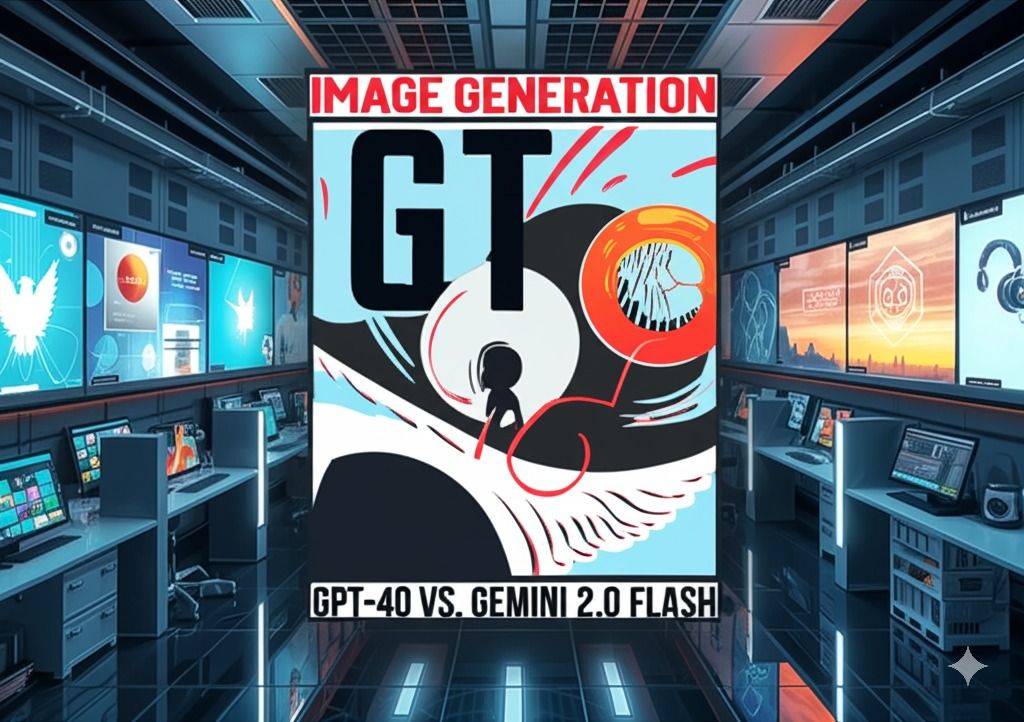Introduction
In the world of AI, image generation has become a game-changer, and two leading models, OpenAI’s GPT-4o and Google’s Gemini 2.0 with its Flash Image Generation, are at the forefront. As of March 26, 2025, both offer impressive capabilities, but how do they stack up? This blog compares their image generation features, helping you decide which fits your needs.
Image Generation Approaches
GPT-4o uses an autoregressive approach, generating images step by step, similar to how it handles text. This method seems to make it great at rendering text within images and sticking closely to prompts. On the other hand, Gemini 2.0’s Flash Image Generation is likely based on a diffusion model, known for creating high-quality, photorealistic images and handling complex scenes well.
Quality and Performance
Research suggests GPT-4o shines in tasks needing precise text, like creating images with clear labels, while Gemini 2.0 might be better for artistic projects, like photorealistic landscapes. Both are fast, but exact speeds depend on the task, with no clear winner yet in benchmark.
Detailed Analysis of GPT-4o Image Generation vs. Gemini 2.0 Flash Image Generation Capabilities
Overview and Background
As of March 26, 2025, the AI landscape for image generation is dominated by two major players: OpenAI’s GPT-4o and Google’s Gemini 2.0, particularly with its Flash Image Generation feature. GPT-4o, released in May 2024 with image generation capabilities added by March 25, 2025, is a multimodal model capable of processing and generating text, images, and audio. Gemini 2.0, Google’s latest AI model, integrates advanced image generation, likely an evolution of their Imagen technology, under the moniker "Flash Image Generation."
Technical Details and Methodology
GPT-4o’s Image Generation:
- Utilizes an autoregressive approach, generating images sequentially, pixel by pixel or in a structured manner, similar to its text generation method. This is detailed in TechCrunch: ChatGPT's Image Generation Feature Gets an Upgrade.
- This approach is believed to enhance text rendering within images and improve prompt adherence, leveraging the same neural network for all modalities, as noted in Maginative: OpenAI’s GPT-4o Can Now Generate Images—and It’s Really Good at It.
Gemini 2.0’s Flash Image Generation:
- Likely built on a diffusion model, akin to Google’s Imagen, known for high-quality photorealistic outputs. The exact methodology, termed "Flash," suggests optimizations for speed or quality, though specific details are less publicly available.
- Assumed to be part of Google’s multimodal AI ecosystem, potentially offering real-time generation capabilities, as inferred from Google AI Blog: Introducing Gemini 2.0.
Capabilities and Use Cases
GPT-4o:
- Excels in interactive editing, allowing users to refine images through conversation, such as drawing a notepad with a tic-tac-toe grid and making moves, as discussed in 4o Image Generation Hacker News.
- Can perform style transfers (e.g., turning a tortoise into Hokusai style), create whimsical designs like birthday invitations with dinosaurs, and generate maps, though with potential inaccuracies, as seen in ChatGPT Share.
Gemini 2.0:
- Likely strong in photorealism and complex scene generation, based on Google’s Imagen heritage. User feedback suggests it’s preferred for artistic projects, though specific examples are less documented in public forums.
- Assumed to handle similar tasks like style transfer and creative designs, but interactivity details are unclear without direct platform access.
Comparative Analysis
The following table summarizes the comparison across key dimensions:
User Feedback and Practical Use
User feedback, gathered from X posts and forums, indicates:
- GPT-4o is praised for ease of use and context-aware image generation, with users appreciating its ability to refine images through conversation (0xmetaschool X post).
- Gemini 2.0 is favored for artistic projects, with some users noting better image quality for photorealistic outputs, though specific posts are less prevalent.
Benefits and Strengths
- GPT-4o: Its integration into ChatGPT allows for seamless iterative refinement, making it ideal for collaborative and interactive tasks. It excels at text-heavy images, maintaining consistency across iterations, as per Maginative: OpenAI’s GPT-4o Can Now Generate Images—and It’s Really Good at It.
- Gemini 2.0: Likely offers superior photorealism, leveraging Google’s diffusion model expertise, suitable for creative and artistic applications.
Limitations and Challenges
- GPT-4o: May produce inaccuracies, such as hands with extra fingers or geographical errors in maps, as noted in user discussions.
- Gemini 2.0: Less information on interactivity and availability may limit its appeal for conversational use, with potential restrictions based on Google’s deployment.
Ethical Considerations and Artist Rights
- GPT-4o: OpenAI has robust policies, preventing mimicry of living artists and offering an opt-out form, enhancing responsible use, as per TechCrunch: ChatGPT's Image Generation Feature Gets an Upgrade.
- Gemini 2.0: Assumed to have similar ethical guidelines, but specifics are less detailed, requiring further exploration.
Recent Developments and User Reactions
The latest updates, announced in March 2025, have sparked discussions on X, with users sharing examples of GPT-4o’s capabilities, like reproducing advertisements, and praising Gemini 2.0’s image quality for artistic projects, as reported in Users In Awe of OpenAI’s GPT-4o Native Image Generation Feature Analytics India Magazine. GPT-4o and Gemini 2.0’s Flash Image Generation are both state-of-the-art, with GPT-4o leading in interactive, text-focused tasks and Gemini 2.0 excelling in photorealistic, artistic outputs. The choice depends on user needs, with GPT-4o’s conversational integration being a significant advantage and Gemini 2.0’s quality appealing for creative projects.
